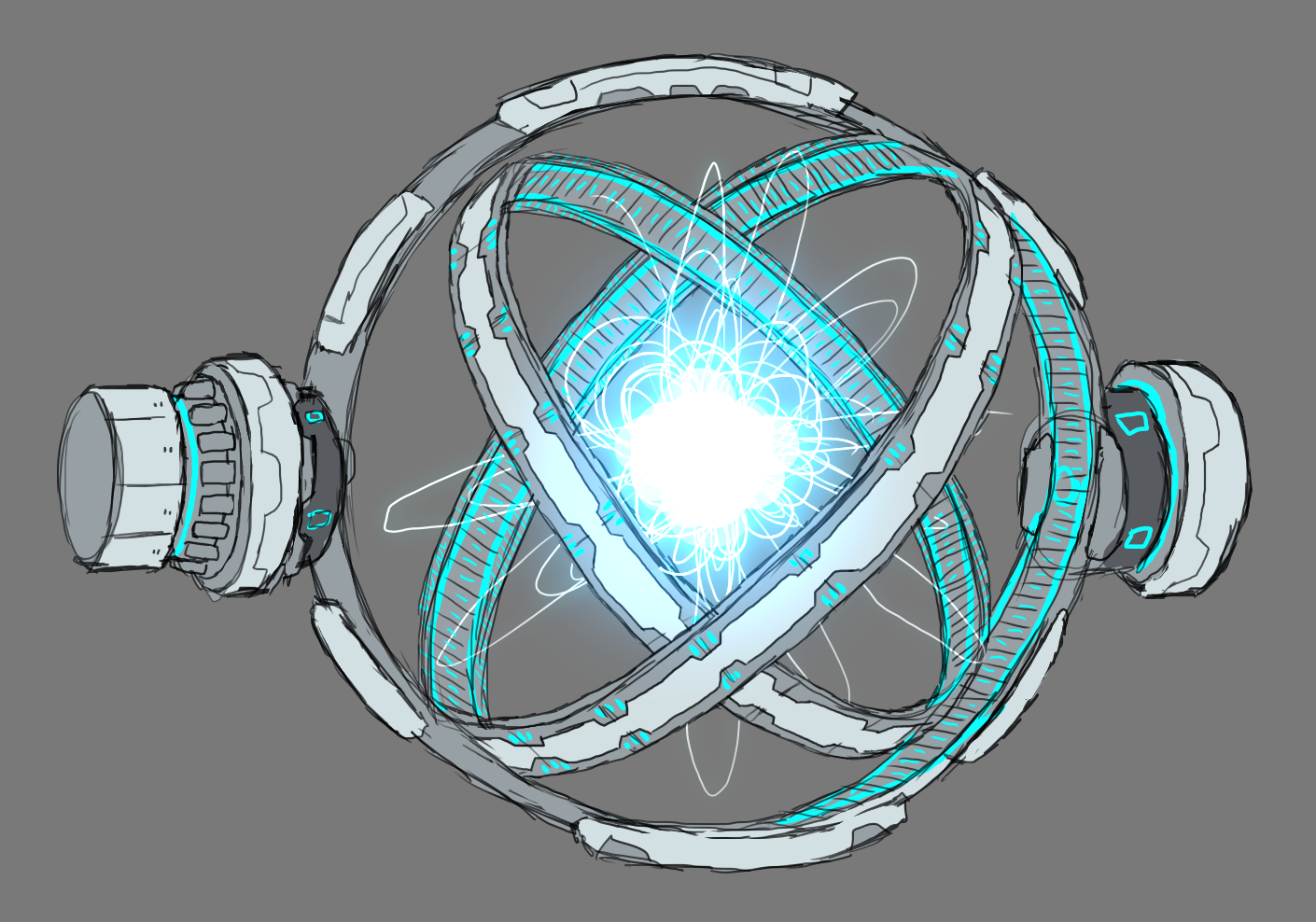Subspace Drive
The subspace drive is one of the most common faster than light engines utilized by the gauss dominion. Though they are aware of other FTL mechanisms such as warp drives, wormholes, and tachyon sails.
The drive functions by spinning thin arsium loops at near relativistic speeds within carefully tuned gyroscopically mounted particle accelerators. When the system is properly calibrated the drive will exert a "torque" on spacetime, essentially rotating the ship across higher dimensions in realspace and squeezing it into a bubble of compressed spacetime, which can in turn transit through a micro-wormhole into other dimensions.
One of these dimensions, subspace, is the dimension used to transit between locations. Subspace is a compressed dimension of spacetime wherein a ship can then move using its standard engines. Though because space is compressed a ship will move vastly further for a given acceleration and time. The "depth" which a ship can descend into subspace is measured in a W-value. With each layer of W equating to how many units of realspace for each unit of subspace are crossed.
For instance traveling in subspace W-10 means one would move 10 times further in subspace than in realspace. Space conflict era subspace drives could achieve W-values of hundreds of thousands; while modern ones can achieve millions or even billions. It is common for ships to cruise at near their maximum subspace depth, then ascend into lower levels of subspace when approaching their arrival point in order to precisely control their arrival to avoid overshooting.
Gravitational shadows caused by the gravity of large bodies such as planets or stars can "leak" into subspace. These shadows can often be useful for navigation by correlating them to existing celestial bodies such as black holes or large stars.
Manufacturing
The first step to constructing a subspace drive is to produce the Arsium torsion bands. This requires creating a seamless thick wire or loop of the material in a perfect circle. As it spins around at relativistic speeds small imperfections can create imbalances or structural weaknesses within the band causing it to shatter flinging shrapnel throughout the interior of a vessel.
Once this is completed, the supercollider rings containing gravitational and magnetic levitation technology must be assembled around these bands and placed into a stabilization chamber.
Social Impact
For those who discovered or later appropriated this technology, the impact was immense. Civilizations were no longer constrained to traveling at sublight speeds, and only restricted to colonizing planets in their proverbial backyard.
Access & Availability
These forms of FTL engines are highly coveted, though they are available to both military and civilian vessels. The ones on civilian vessels are often designed differently, prioritizing safety, reliability and energy efficiency at the cost of speed. Military grade subspace drives can dive extremely deep into subspace to allow strategic repositioning anywhere in gaussian territory within hours, with their maximum speeds often highly classified. Unable to be easily miniaturized they are unavailable on ships smaller than a few hundred meters which lack the space, power generation capacity and computation power to support one. Attempting to make a smaller subspace drive with equivalent performance to one of the minimum standard size results in exponentially lower performance efficiency and higher cost.
Complexity
Even simple civilian drives are highly complex, and can cost billions of taif to purchase just the core drive module. Military models which may incorporate reinforcement or redundant components can require an entire dedicated team of engineers just to operate.
Discovery
Subspace drives were independently discovered during the space conflict era by at least 3 seperate civilizations. (Katharians, Go'shii, and Mendians). Although the drives utilized during that timeframe were vastly inferior to modern ones. Crossing the galaxy even with a "fast" subspace drive could still potentially take months.
Related Materials
Related Vehicles




Comments